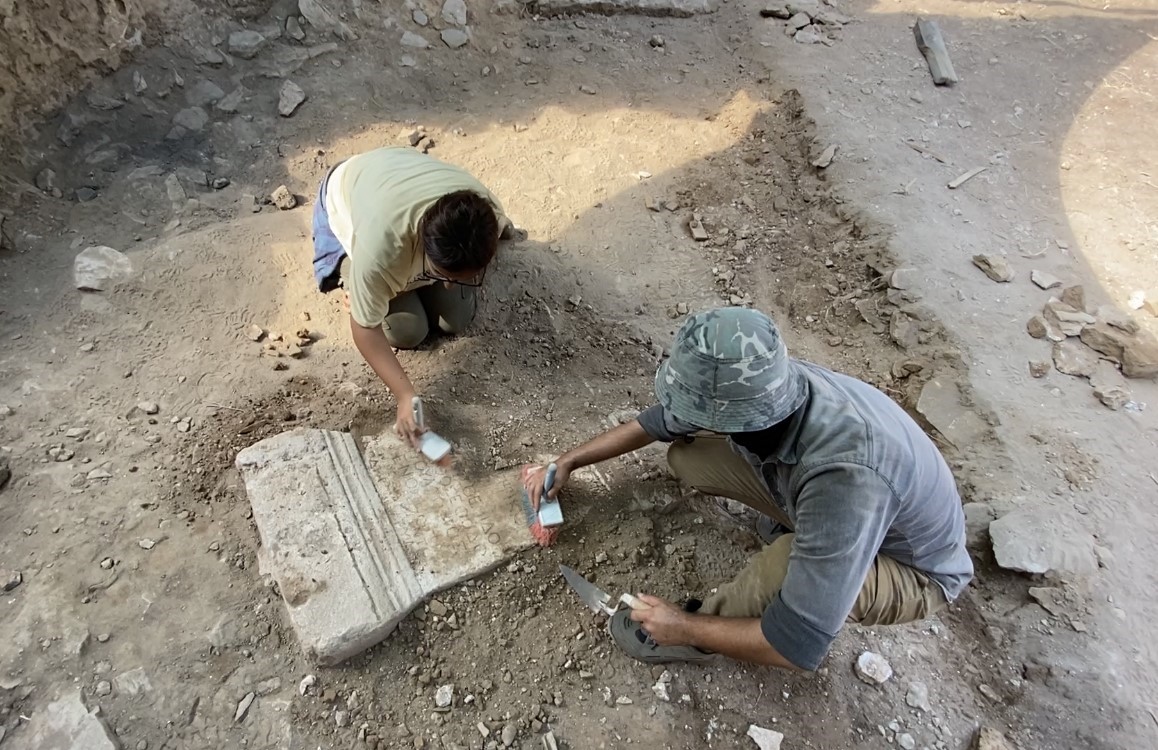
Excavation teams in Mersin's ancient city of Anemurium, Türkiye, have uncovered a remarkable inscription dedicated to an athlete, believed to be around 2,000 years old.
This significant discovery occurred in the Port Bath, where the team has been conducting uninterrupted excavation work for 12 months. The inscription, measuring 120 centimeters in height and 50 centimeters in width, weighs approximately half a ton.
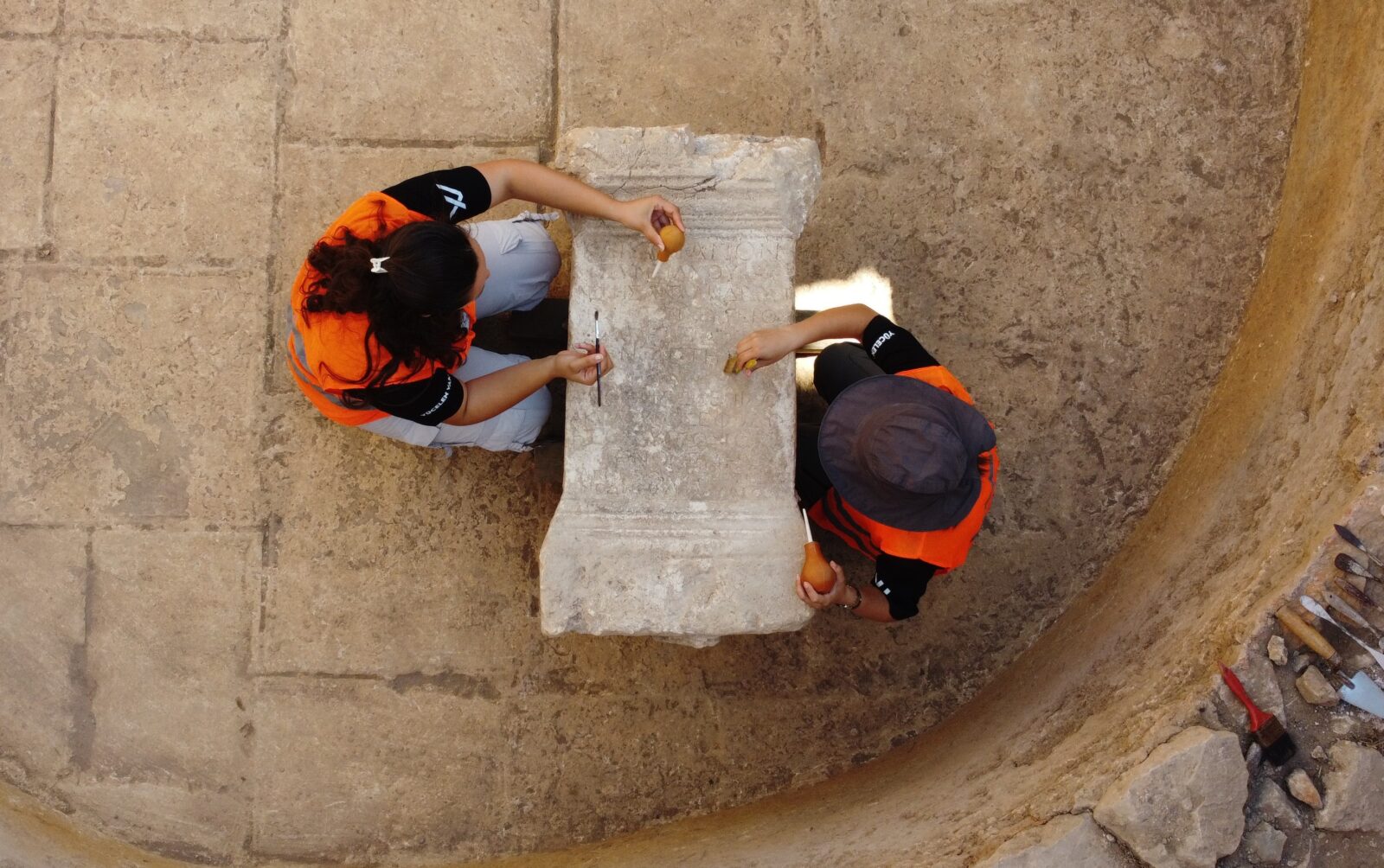 The teams, who continue their excavations regularly every year in the ancient city of Anemurium, one of Mersin's important cultural tourism spots, found an inscription consisting of 13 lines honoring a wrestling athlete of the period, which is considered dating back 2,000 years for the first time in the Port Bath during the excavations in 2024, Türkiye, October 17, 2024. (IHA Photo)
The teams, who continue their excavations regularly every year in the ancient city of Anemurium, one of Mersin's important cultural tourism spots, found an inscription consisting of 13 lines honoring a wrestling athlete of the period, which is considered dating back 2,000 years for the first time in the Port Bath during the excavations in 2024, Türkiye, October 17, 2024. (IHA Photo)
Mersin Governor Ali Hamza Pehlivan remarked on the excitement of witnessing the unearthing of such a significant artifact.
"We are witnessing the unearthing of a remarkable piece from the earth. An inscription has been discovered that sheds light on human history," he stated.
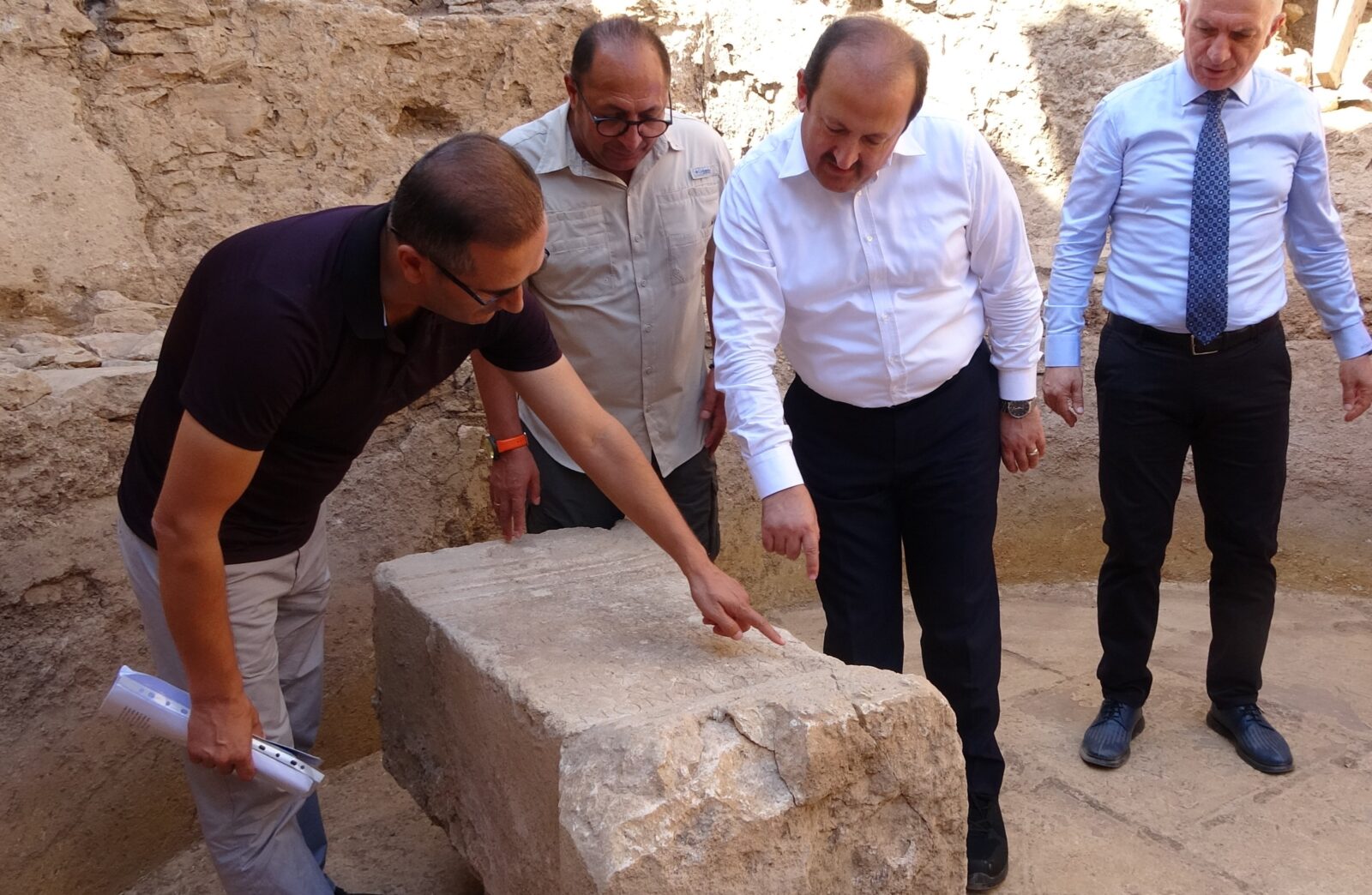 The teams, who continue their excavations regularly every year in the ancient city of Anemurium, one of Mersin's important cultural tourism spots, found an inscription consisting of 13 lines honoring a wrestling athlete of the period, which is considered dating back 2,000 years for the first time in the Port Bath during the excavations in 2024, Türkiye, October 17, 2024. (IHA Photo)
The teams, who continue their excavations regularly every year in the ancient city of Anemurium, one of Mersin's important cultural tourism spots, found an inscription consisting of 13 lines honoring a wrestling athlete of the period, which is considered dating back 2,000 years for the first time in the Port Bath during the excavations in 2024, Türkiye, October 17, 2024. (IHA Photo)
The excavation team, led by professor Mehmet Tekocak from Selcuk University, expressed their excitement about this find. “We are discovering a solid inscription consisting of 13 lines for the first time,” he said.
This inscription honors a wrestler named Kaikilianos, who won a competition organized every five years by a figure named Flavianus.
Anemurium, located on the Mediterranean coast and spanning approximately 600 acres, is a vital cultural tourism destination in Türkiye.
Ongoing excavations, conducted by a multidisciplinary team of scholars and students, have revealed that the ancient city has roots dating back to the first century B.C. and continued to thrive until the seventh century A.D.
Previous findings at this site include a statue of a clothed woman from the Roman period, enhancing its significance as a site of rich historical and cultural heritage.
Governor Pehlivan highlighted the broader importance of Anemurium, stating: “This city is not only significant for Mersin but for our entire country. The archaeological excavations here are crucial for uncovering the ancient city's history.”
He emphasized the discoveries made, such as this inscription, will contribute to making Anemurium a UNESCO World Heritage Site, with the nomination process currently underway.
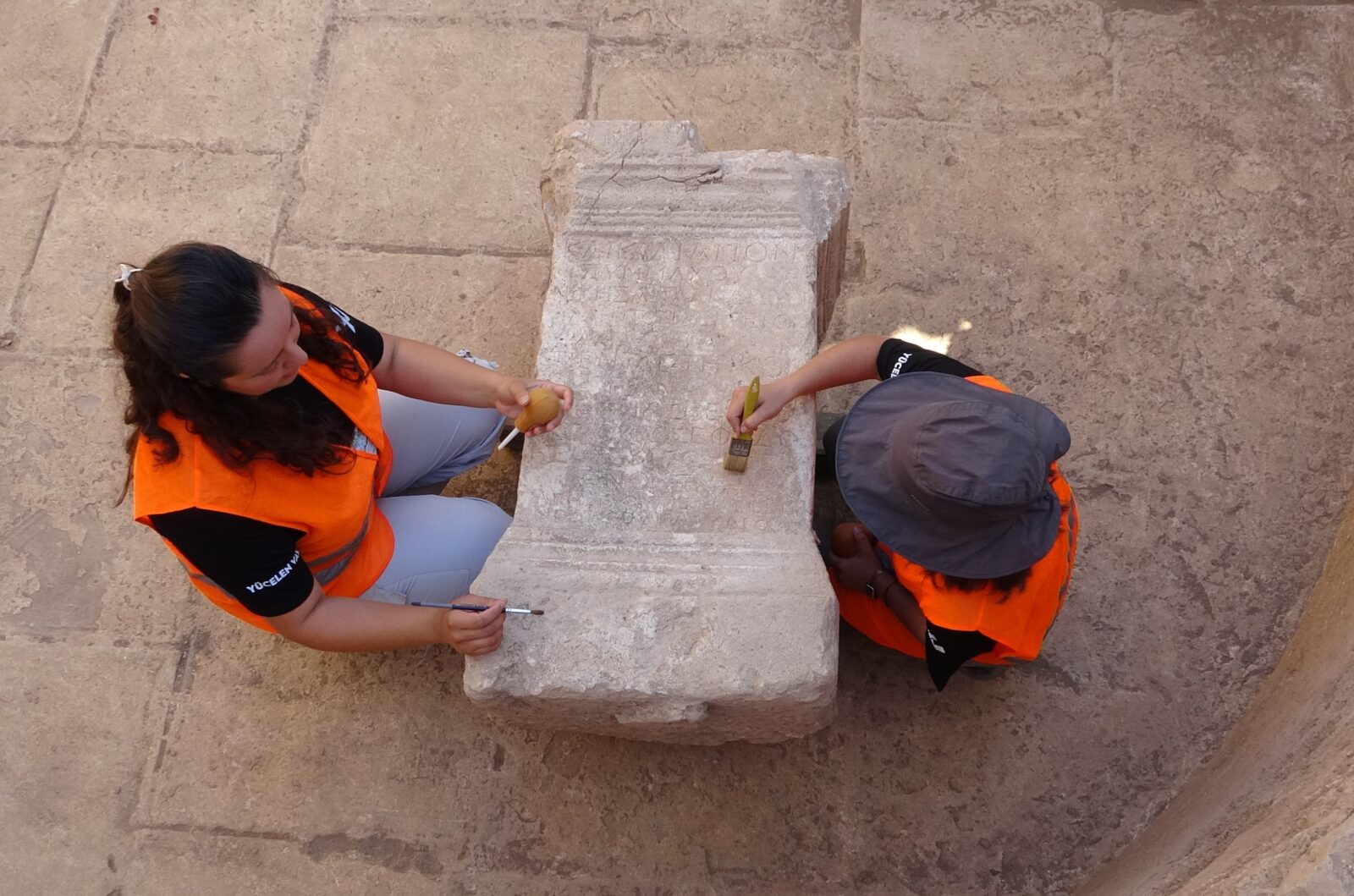 The teams, who continue their excavations regularly every year in the ancient city of Anemurium, one of Mersin's important cultural tourism spots, found an inscription consisting of 13 lines honoring a wrestling athlete of the period, which is considered dating back 2,000 years for the first time in the Port Bath during the excavations in 2024, Türkiye, October 17, 2024. (IHA Photo)
The teams, who continue their excavations regularly every year in the ancient city of Anemurium, one of Mersin's important cultural tourism spots, found an inscription consisting of 13 lines honoring a wrestling athlete of the period, which is considered dating back 2,000 years for the first time in the Port Bath during the excavations in 2024, Türkiye, October 17, 2024. (IHA Photo)
Professor Tekocak noted that inscription reveals crucial information about ancient competitions and the emphasis placed on sports during that era.
“This inscription indicates that sports were held in high regard, with local and possibly Olympic-level competitions taking place," he explained.
Furthermore, Tekocak pointed out that the findings suggest Anemurium was a center for nurturing athletes in antiquity, contributing to both national and international competitions. This reinforces the idea that the city was not only a maritime trading hub, but also an important athletic training ground.
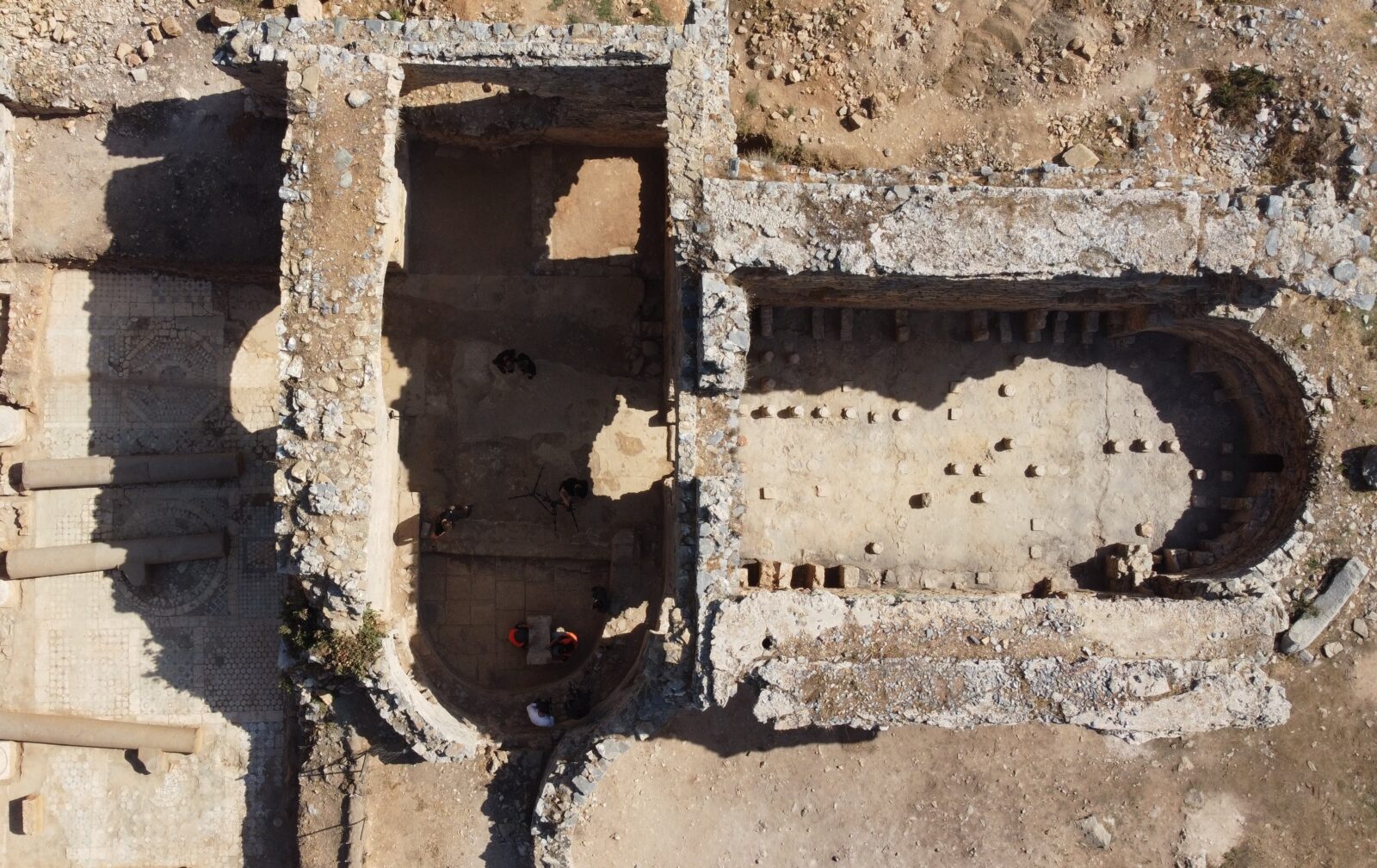 Port Bath, ancient city of Anemurium, Türkiye, October 17, 2024. (IHA Photo)
Port Bath, ancient city of Anemurium, Türkiye, October 17, 2024. (IHA Photo)
Tekocak concluded by expressing the excitement surrounding this discovery. “Finding a complete 13-line inscription for the first time is a significant development for us and offers new insights into the athletic culture of ancient Anemurium,” he said.
As excavation efforts continue, the archaeological team remains hopeful for further discoveries that will enrich our understanding of the ancient city's role in sport and culture.